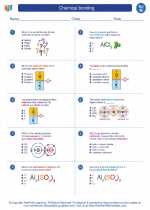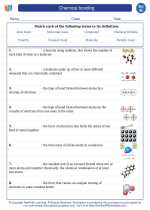Chemical bonding -> sublimation
Sublimation
Sublimation is the process in which a solid changes directly to a gas without passing through the liquid phase. The term "sublime" is used to describe this change in state. Sublimation occurs when the pressure of the surrounding atmosphere is lower than the vapor pressure of the solid, allowing the solid to transition to a gas without melting first.
Examples of Sublimation
One common example of sublimation is the process by which dry ice (solid carbon dioxide) changes directly to carbon dioxide gas without melting. Another example is the way in which mothballs transition from a solid to a gas, releasing a strong odor in the process.
Study Guide
When studying sublimation, consider the following key points:
- Definition of sublimation
- Conditions required for sublimation to occur
- Examples of substances that undergo sublimation
- Real-life applications of sublimation
Real-life Applications
Sublimation has several important real-life applications. For example, in the field of chemistry, sublimation is used to purify substances by separating mixtures of solids based on differences in sublimation temperatures. Additionally, sublimation is utilized in the production of freeze-dried food and in the creation of air fresheners and deodorizers that release fragrance through sublimation of the solid aromatic compounds.
[Sublimation] Related Worksheets and Study Guides:
.◂Science Worksheets and Study Guides Eighth Grade. Chemical bonding

 Worksheet/Answer key
Worksheet/Answer key
 Worksheet/Answer key
Worksheet/Answer key
 Worksheet/Answer key
Worksheet/Answer key
 Vocabulary/Answer key
Vocabulary/Answer key
